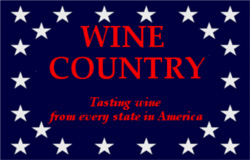In case you are not aware of what Lodi Native is, or what they are doing, please read on. Lodi Native is a collaboration of six winegrowers who aim to highlight Lodi's unique sense of place by focusing on single-vineyard Zinfandel selections from the region. Each wine benefits from native yeast fermentation, zero new oak, and a “hands-off” approach in the vineyards and cellar, allowing the terroir-driven fruit to speak for itself. It's an effort that any Zinfandel purist can appreciate.
The six labels involved in the Lodi Native project - McCay, Macchia, Fields Family, Maley Brothers, St. Amant and m2 Wines - represent winegrowers as well as winemakers, like the majority of Lodi’s producers. Here are the wines tasted and tweeted about during the virtual event:
2013 Lodi Native Stampede Vineyard Zinfandel (Fields Family Wines)
2013 Lodi Native Schmiedt Ranch Zinfandel (Macchia Wines)
2013 Lodi Native Wegat Vineyard Zinfandel (Maley Brothers)
2013 Lodi Native Trulux Vineyard Zinfandel (McCay Cellars)
2013 Lodi Native Marian’s Vineyard Zinfandel (St. Amant Winery)
2013 Lodi Native Soucie Vineyard Zinfandel (m2 Wines)
Last year's inaugural releases were astounding. The bar was set high, and the Lodi Native growers and producers jumped at the chance to match - or exceed - the quality of the 2012 wines. These wines are all available at the respective wineries and at the Lodi Wine & Visitor Center only. Check here for more information on availability. I was invited to take part in the virtual tasting event and was provided samples of the wines for that purpose.
On social media, @CourtneyC_Walsh remembered "the 2012 #LodiNative wines. Can't wait to see if the 2013's live up to the high reputation!" Would you really expect less? @thisismyhappiness tweeted, "So excited to have the opportunity to taste 6 special Zinfandels of the Lodi Native project tonight!" @MsPullThatCork noted, "no tricks in the cellar in making these #Zinfandel wines, just the vineyards showing off!" @myvinespot thought, "these would all work with bbq - that may be one of the hallmarks of @Lodi_Wine." Quite true. @cliffordbrown3 summed it up nicely: "The Lodi Native project is without a doubt the most exciting project anywhere in the world."
2013 Lodi Native Stampede Vineyard Zinfandel (Fields Family Wines)
The Stampede Vineyard dates back 70 years or so and is planted along the banks of the Mokelumne River in the Clements Hills AVA. Winemaker Ryan Sherman - Fields Family Wines - and growers Jeff and John Perlegos combined on this excellent vintage of the sextet.
The color is a little lighter shade of ruby than I usually find with Zinfandel. There is a highly perfumed nose sporting blueberry and blackberry aromas, a little bit spicy with an almost Pinot-like coffee note. The palate is delicious, with blueberry and spice leading the way, a dash of rosemary and a fantastic tannic structure and acidity that will make this wine perfect pairing with steaks or pork chops off the grill. The earthy quality makes me want lamb tacos. Thank goodness I live in Southern California, where that earthly delight is readily available.
Follow Randy Fuller on Twitter




